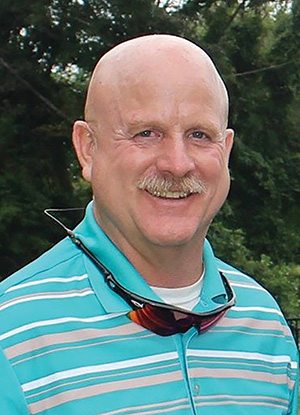
National sales representative for Georgia’s The Turfgrass Group
Nearly 30 years in the turf industry has given me a wealth of knowledge and experience in cool season grass varieties. Over the last year-and-a-half I’ve become acquainted with new warm season varieties that are shaking up the industry and creating renewed enthusiasm for what’s possible in lawn grass and bringing heightened awareness to the environmental benefits these new varieties have to offer.
The future is promising and exciting for warm season and cool season grasses. Many of these new grasses are already in the pipeline and are amazing when compared to the grasses that existed just a generation or two ago. Cool season varieties like fescue, buffalo grass, bluegrass, Texas hybrid bluegrass, and some of the blends of Kentucky bluegrass crossed with Texas hybrids are becoming more heat tolerant. I’ve also seen some new vegetative types including varieties like Bermuda, Centipede, St. Augustine and Zoysia that are all becoming more cold tolerant.
It’s an exciting time to be in the industry and see the tremendous research that’s going on. Every venture that’s as varied and exciting as the turfgrass industry faces its share of challenges. Right now, one of the biggest challenge is the ever-present need for better education, not just as it relates to the public sector, but within the industry itself.
Keeping homeowners, sports field managers, golf course superintendents, landscape architects, building
contractors, landscape professionals, government decision-makers and others up to date with innovations as a result of new grass varieties is important, but so is keeping people informed as to what grasses work best in individual regions of the country.
The Pursuit of Knowledge
As we continue to evolve, it’s important to have an awareness of current research studies, keep abreast of trends, and have a heightened awareness of how some grass varieties might work extremely well in one region, but not so well in another.
Weather is a factor throughout the world and recent changes in weather patterns have already created variations in plant growing zones. Weather, soil conditions and many other factors result in an ever-present question for the industry — how do we ensure everyone has the knowledge they need about new grass varieties, and a fundamental understanding of what works and what doesn’t?
Part of the problem is misinformation. With the Internet dominating so many aspects of our lives, a lot of information is floating around, but some of it is often misleading or unintentionally incorrect. Information based on extensive research and reliable testing is critical and it may come from a variety of sources.
Universities do research on site, but they also work with turfgrass sod farmers, using their fields to test new varieties for such attributes as greater drought tolerance, water efficiency, disease resistance, salt tolerance and insect resistance. In addition to research, education is crucial. Many universities have excellent websites to gather current information and share it with producers and homeowners. Extension specialists are another excellent resource, serving as a conduit between university research specialists, industry and the general public.
Also of importance are the National Turfgrass Evaluation Program (NTEP) trials. The program develops and coordinates uniform evaluation trials of turfgrass varieties and promising selections.
As a turfgrass producer or as a provider of turfgrass varieties, we have to make the most of the regional information we have. Between the NTEP trials, The Lawn Institute, universities and turfgrass sod farms, there is no shortage of sources for good information. And of course, no one knows the soil types within individual areas better than the farmers growing crops within those regions. Turfgrass farmers, much like other farmers, are stewards of the land, environmentally conscious and are committed to protecting and preserving the land and water for future generations.
One of the things I enjoy most about my job is going from region-to-region and working with farmers. Like so many other professionals, it’s evident that the better producers are often the ones who are more proactive, seek out good information, ask questions and welcome innovation. Who better to answer their questions than someone who makes their living in the industry and takes pride in what they do?













